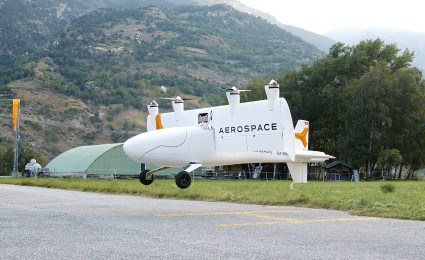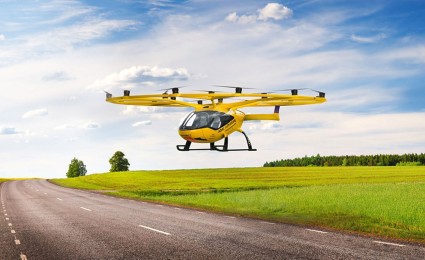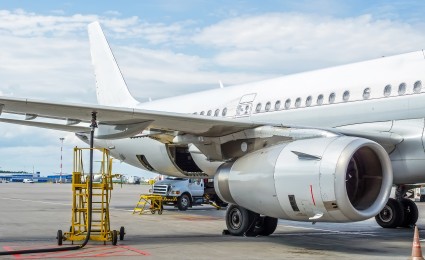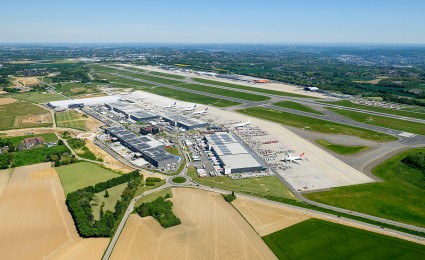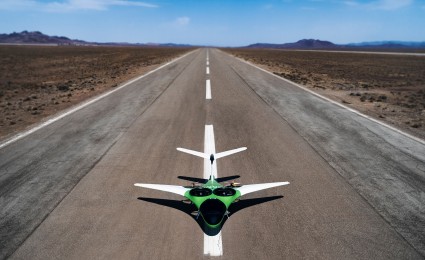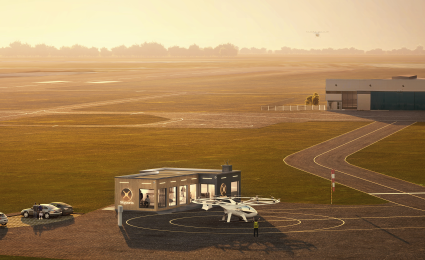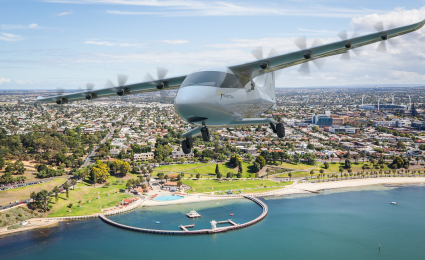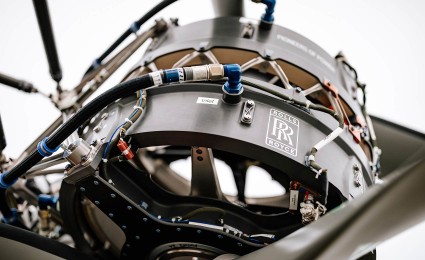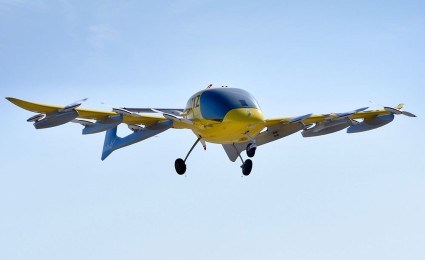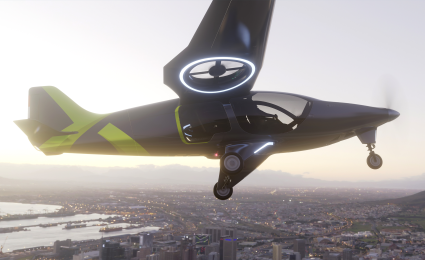Urban air mobility (UAM) is a rapidly growing industry with great potential that stands for the expansion of urban mobility into the third dimension: the air.


Advanced Air Mobility: How to develop an automated traffic management platform
By Manfred Hader and Stephan Baur
Providing digital infrastructures for the operation of automated air vehicles
Growing urban populations, already overloaded transportation possibilities on the ground, and numerous promising passenger drone projects across the world indicate major growth potential for the future of Urban Air Mobility. Managing the increased air traffic in the future will require highly automated and advanced air traffic management solutions. We talked with Corvin Huber, CEO and CTO of D3 Technologies, about the digital infrastructures that will be needed for Advanced Air Mobility to be successful and what solutions D3 Technologies provides.
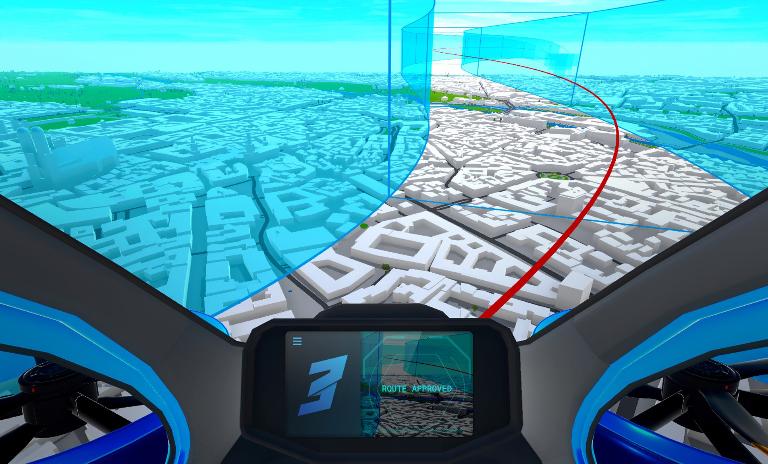
What is your vision of Advanced Air Mobility (AAM) and how will it be implemented?
Corvin Huber: We define AAM as the shared use of lower airspace by air vehicles (AVs) capable of vertical take-off and landing (VTOL) or short-distance take-off and landing (STOL; jointly V/STOL). These vehicles are largely equipped with some form of sustainable propulsion. It is anticipated that these AVs will operate in larger numbers within a given volume of airspace compared to legacy aviation operations.
We believe we are on the cusp of the next revolution in aviation. This revolution will happen in increments, which will be defined more by the development of the necessary regulatory framework, the options for market launch and the technological maturity of individual vehicle concepts than by actual sustained market pressure.
Metropolitan areas are already home to more than half of the world's population. In the 21st century, flying will finally be an experience that can be shared by all city dwellers. The needs of these areas are what will drive the long-term demand and determine what air mobility will ultimately look like in the long run.
In the first few years, the form of transportation that will eventually evolve to offer urban mobility will consist of specialized use cases, serving early viable business cases, such as supplying islands, providing emergency relief, facilitating ship-to-shore operations and enabling a smattering of early, dedicated and largely experimental point-to-point operations by passenger vehicles. These will prove the economic and technological viability of particular vehicle concepts and jointly inform the design of ever more sophisticated and ultimately urban applications.
"As soon as the density of air traffic increases and use models require automation in order to be commercially viable, an automated traffic management system becomes mandatory."
Can you briefly describe how D3 Technologies can enable AAM with its Air Traffic Management solution?
Corvin Huber: We provide an open digital traffic management platform for automated AAM. Our safe and scalable system organizes air traffic over metropolitan and suburban areas. We believe that a future AAM ecosystem hinges on a "Cooperative Vehicle Infrastructure System" – effectively an Internet of Air Mobility with a guiding central authority.
Early use cases will be piloted by vehicles operating much like helicopters today. As soon as density increases and use models require automation in order to be commercially viable, an automated traffic management system becomes mandatory. This system is being built by D3. We call it SkyRoads.
To make all of this a reality, community acceptance is key. Cities need to have a say in who uses their airspace, and when and how they use it. SkyRoads will enable cities to define usage, traffic patterns and no-fly zones and ensure that traffic occurs when and where it is beneficial to the community.
What is your view on the timeline of introducing autonomous/unmanned flights for AAM, both from a technological and a regulatory perspective?
Corvin Huber: We will see fully automated flying systems operating outside of highly populated areas (emergency relief in rural areas, medical transportation for remote regions) before we see the same system in urban environments. We will start seeing these early applications emerge as soon as 2023/24 in experimental set-ups. These will morph into certified operations over the following years. Next will be inter-city passenger-carrying transportation over sparsely populated areas, initially piloted, later automated, which will be seen from 2025/26 onward. Full-blown, urban and automated transportation will come in from the late '20s or early '30s.
What will be the major differences in Unmanned Air Traffic Management for AAM compared to conventional Air Traffic Management?
Corvin Huber: The limiting factors of airspace capacity today are air traffic controllers' workload and the cognitive capabilities of pilots on the one hand, and the ability to ensure vehicle trajectories to very close tolerances on the other. To bring AAM to life at scale, a paradigm shift for air traffic management is needed: it needs to be highly automated, that is, no man-in-the-loop.
UTM stands for Unmanned Aerial System (UAS) Traffic Management. However, we need to address the elephant in the room, which is that the operational and safety requirements of small work drones and passenger-carrying drones differ substantially. Presently, there seems to be a tacit assumption that the various services proposed for UTM will mature and integrate to provide a collective service with reliability levels that will be acceptable to manned and/or passenger-carrying operations. D3 challenges this assumption. We believe that a future urban air traffic environment at scale needs to:
- Be highly automated: no human operator monitoring every single vehicle (i.e. increase safety and capacity, lower cost)
- Allow for regional competition: no single service provider for an entire country, but connected and interoperable service providers (this is also promoted by regulatory agencies)
- Integrate small work drones and passenger-carrying drones in the same low-altitude airspace (this point is not fully addressed by regulatory authorities at this point)
Which technological sensors/control systems are needed for drones/eVTOL to be able to operate in UTM?
Corvin Huber: In the first step, starting in 2023, EU regulations require only a radio and a transponder for drones operating in U-Space. We believe that for the next steps leading towards AAM, a secondary safety mechanism will be required. In order to achieve overall safety levels, vehicles will have to be equipped with the ability to perform harmonized escape or recovery maneuvers in the event of primary system failures or blackouts in order to be predictable in their resulting effects on the system. This secondary system essentially replaces the highly intelligent but volume-limited tactical deconfliction (according to "rules of the air") with which the pilot-controller combination today ensures vehicle/vehicle and vehicle/obstacle separation.
D3 posits that eventually drones will fly along routes that have been cleared by a central authority – much like today, but automatically generated and supervised. The sensors and systems remaining on board the aircraft will be limited to guiding a vehicle in the case of a highly unlikely failure of the central guidance system.
This system approach provides a significant advantage: the complexity of on-board systems can be reduced, thereby not only reducing initial vehicle CAPEX but also substantially reducing maintenance costs for continued airworthiness of mission-critical sensor suites.
What other digital infrastructure will be required in cities and at vertiports?
Corvin Huber: Some infrastructure requirements such as a low-altitude weather data service or a Flight Information Management Service (FIMS) can be met in the short term. However, the current air traffic control system architecture (in any country) does not support high-density, low-altitude operations in an AAM environment:
- Voice communication methods in use today are not suited for AAM traffic density
- Surveillance and navigation infrastructure are not suited for the emerging types of air traffic and they need to be significantly enhanced
These two points remain major issues and they need to be addressed in time to enable AAM at scale. D3 intends for the SkyRoads system to eventually provide complete guidance between take-off and landing.
Is there a need for a reorganization of lower airspace, e.g. creating dedicated low-airspace structures for AAM?
Corvin Huber: Yes, definitely! There are already some initial concepts available, such as "UAM Corridors" in the US, and "U-Space" in the EU. UAM Corridors aim at enabling eVTOL flights in the short term with minimum impact on conventional air traffic control. The U-Space concept does not yet explicitly address passenger-carrying eVTOLs.
These concepts will of course evolve over time to accommodate higher traffic levels and services including passenger transport.
Who are the main stakeholders in the AAM ecosystem to develop and implement a UTM system and what about partnerships in the UTM space?
Corvin Huber: We are seeing the first types of partnerships emerge: between UTM system providers and air traffic control operators, such as Unifly and DFS in Germany, and between UTM system providers and large, established system integrators for ATC systems, such as Skygrid and Raytheon in the US. As the AAM market matures, and as Urban Air Mobility becomes more visible, we expect that cities will want to step up and take an active role in the rollout of the AAM ecosystem in their city.
Current UTM providers do not offer turnkey solutions that include communications, navigation and surveillance capabilities for AAM. We assume that cities and regions as customers will need an all-encompassing solution, and a main contractor for a city may find it useful to create partnerships with other component providers. System operation is a different business model altogether.
Is there a need to engage with EASA/FAA to develop UTM and what is their role in developing the UTM system?
Corvin Huber: D3 is already engaging with regulators and standardization bodies in the US and in the EU. On both sides of the Atlantic, the engineering community is engaged in the development of technical standards. The safety regulators only issue regulations. To demonstrate that your product is compliant with these safety regulations, you need to be able to show that you applied the required technical standards.
We are moving into a phase in technology development where the regulator will not be able to keep up with industry development speed. D3 aims at demonstrating an integrated experimental control solution that will then inform the regulator as to the capabilities of current technology and help set standards.
What is the role of national providers of ATM and air navigation services such as Deutsche Flugsicherung (DFS) when it comes to UTM?
Corvin Huber: Air navigation service providers (ANSPs) like DFS have a well-defined government mandate. Presently, their main concern is to keep larger aircraft in controlled airspace separated from drone traffic in uncontrolled airspace. With the number of small drones increasing everywhere, they want to provide air traffic controllers with more visibility of drones flying in proximity to controlled airspace. DFS in Germany is partnering with UTM component providers to achieve this. Skyguide in Switzerland is taking a similar approach, as are other ANSPs.
And traditionally ANSPs are service providers, operating equipment purpose-designed for specific applications. Generally speaking, it has not been the role of ANSPs to develop new system approaches. D3 believes they are generally not equipped to be at the forefront of innovation.
How can the transition phase be managed when manned and unmanned aircraft co-exist?
Corvin Huber: In the US, the FAA's UTM Concept of Operations and "UAM Corridor" concept are the first steps that allow the FAA, drone operators and other stakeholders to gain operational experience. Incremental integration of different types of drones, large and small, passenger-carrying or not, in a city's airspace should go hand in hand with well-defined automation capabilities, including the above-mentioned secondary safety mechanisms.
D3's SkyRoads provides guidance to both piloted and automated vehicles in order to facilitate that transition.
Register now to receive regular insights into Aerospace & Defense topics.



